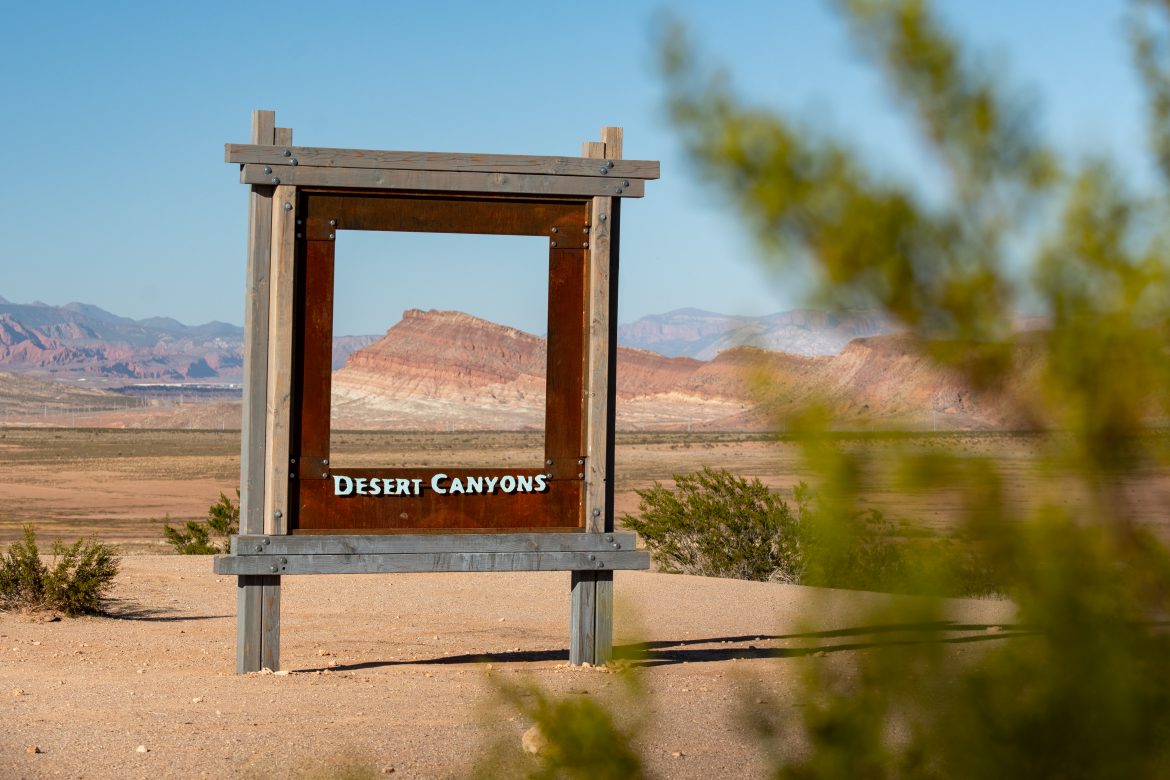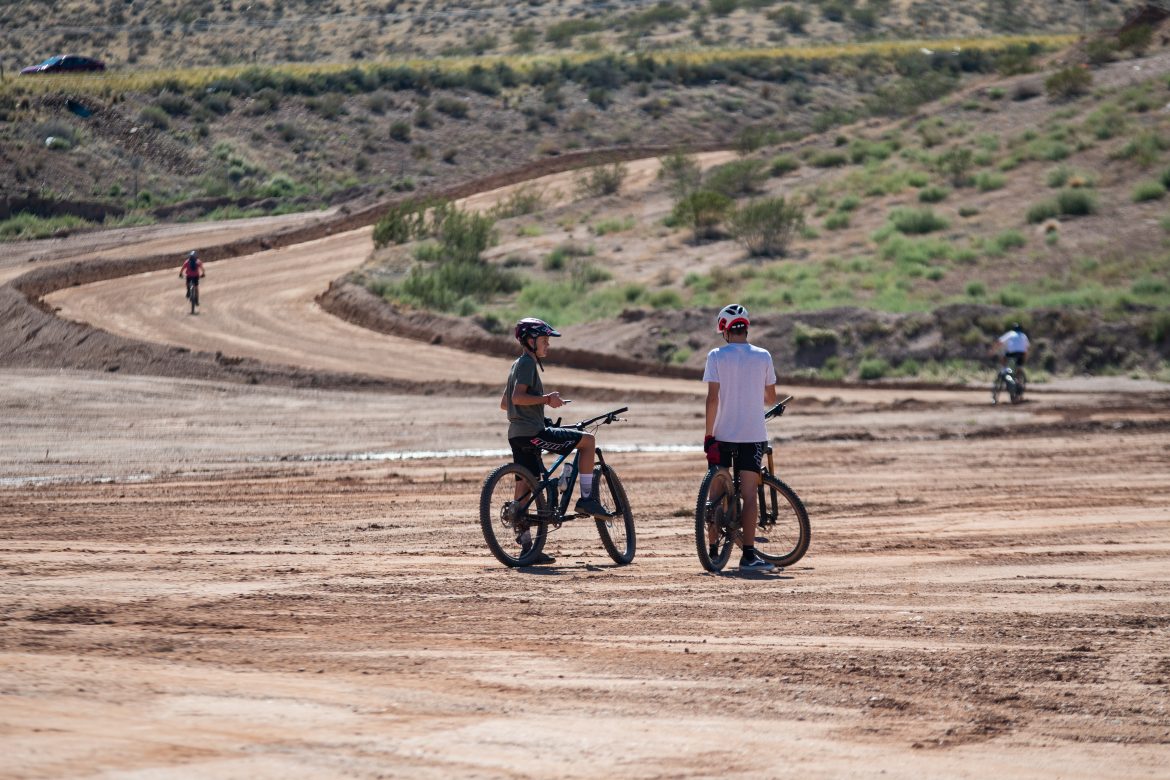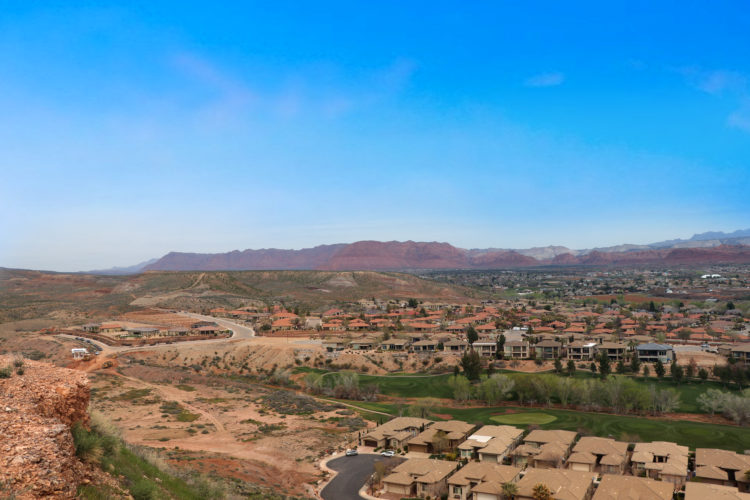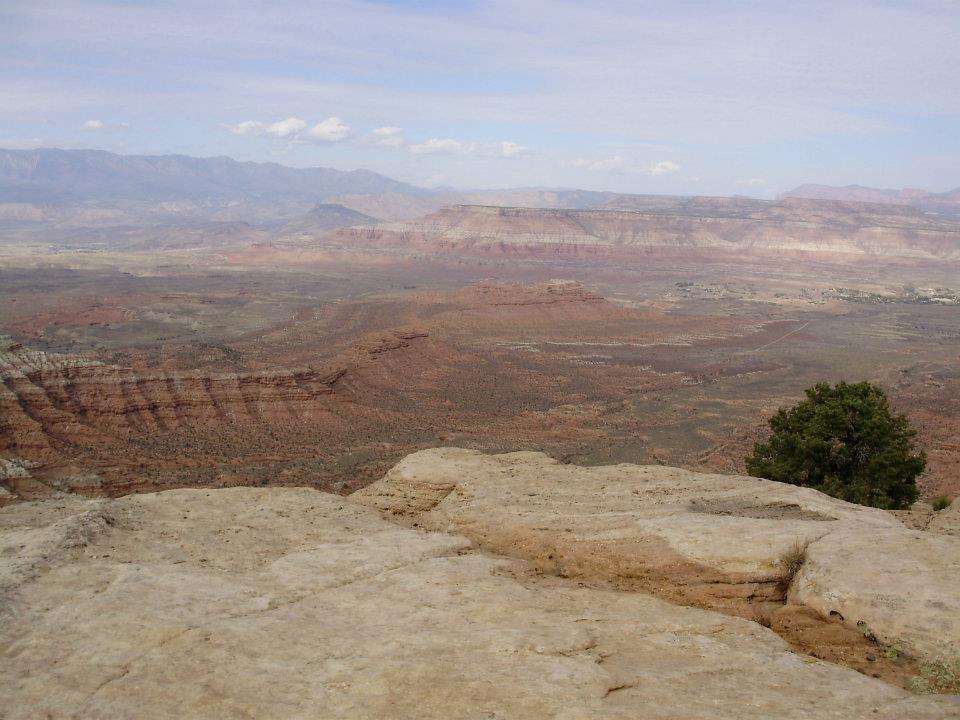
Nestled in Southwestern Utah off of Highway 7, the accessible Desert Canyons trail system is very much a stone’s throw away from the St. George Regional Airport in the Greater Zion area. A few years ago, this young trail system was founded by a local residential builder who wanted to construct a new subdivision outside of town that had easy access to mountain biking trails at their doorstep.
These trails are privately owned and cater to cyclists and hikers alike with about 20 miles of singletrack at their fingertips. Though there’s a good bit of mileage to be had in this physically small, but dense and passionate community, this trail system mainly consists of a couple beginner and intermediate loops: great for those who want to sneak in a quick ride after work.

While the skill level is very open and inviting to newer riders, there are plenty of technical features that will satisfy even the most skilled riders. This trail system is definitely more focused on XC and recently hosted the Utah State Championships for high school mountain biking with hundreds of fast and young riders coming from all over the state.

To our surprise, my friend Dave and I had the chance to check this trail out the weekend before the State Championships. We were initially overwhelmed with the turnout at this seemingly small trail system, but the atmosphere and warmth from other riders was impressive. While my friend prepped a borrowed bike, I had the chance to walk around a bit to snap some photos of the massive parking lot filled with riders and locals.

By chance, I ran into Jake Weber, a high school mountain bike coach and NICA member since 2011. I informed him that it was my first time at Desert Canyons and he erupted with nothing but great things to say about the trails, the community, and the long-term mission of getting the local — as well as national — community on bikes.
Weber played a role in designing the race course and gave us helpful information before Dave and I departed on our slow “race lap.” Weber’s enthusiasm sat with me as I began the loop, often getting passed by very fast high school kids. The positive impact this venue and trail system has had on the locals and traveling student-athletes from across the state was clear; it was bringing everyone together for a competitive, yet fun time.

Dave and I started the clockwise loop with a humbling, gradual climb before the singletrack began. We had just over seven miles total in the race loop which consists of green trails (Pushing Tin Loop and Secret Sauce) and a mile of blue trails (Claim Jumper) in the Varsity Loop. Elevation isn’t severe, but the rolling and often punchy climbs add up to about 550 feet of elevation according to the course description. Most of each trail is fairly tame, but there are enough technical rock sections to keep skilled riders on their toes. The occasional flowy downhills make for fun rests before the next tech section, and add to the overall balance.



Snaking just over a mile and a half into the Pushing Tin Loop, there’s a scenic overlook on a cliff where casual riders can kick back and have a snack. The trail-adjacent bench allows users to gaze over Highway 7 into the Arizona desert before continuing.

As we navigated through larger and larger boulder fields, the variety between gradual climbs, pedally straight sections, and flowy fun increased. This loop appeared to make you work a bit before earning more of your descents towards the end.

I previously mentioned the proximity to the nearby airport. All sorts of aircraft, from military, small personal planes, and national airliners frequently came and went from the landing strips.


To other desert habitants, this trail system might not be scenic, but I found the arid landscape to be beautiful. Rocks changed sizes, yet remained the same with confidence-inspiring grip in the dry, cool conditions. We rode mid-afternoon in October with temperatures in the low 70s. It was a pleasant day to ride to say the least.



While there are many well-known or epic/challenging trails in the St. George/Greater Zion area, you certainly can’t discount what Desert Canyons has to offer and their impact on the local cycling community and economy. With housing rapidly erupting in the outskirts of St. George, trail systems like these not only result in massive selling points to buyers, but create a healthy foundation for the youth that call these trails home. For the adventurous novice rider or perhaps the experienced racer wanting to get out of the house, this trail possesses a lot of character and challenge in these little loops.



















